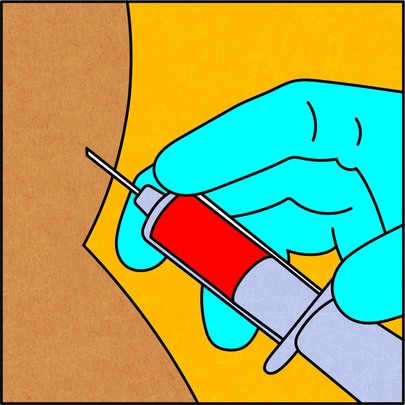Explore potential
Deepen your understanding of your body and factors influencing your performance. Gain insights and comprehension ranging from your diet to the efficiency of your organ functions.
Discover obstacles
Identify deviations through the help of 46 biomarkers that can be crucial to your performance capabilities.
Optimize performance
Based on your results, we follow up with evidence-based recommendations and protocols to optimize your performance. You can also speak directly with our doctors through consultation.
Track progress
Track your progress over time and compare results to see how your performance and health develop. Your fitness - mapped out with precision.
Why take a Performance™ test?
Sn™p01 Performance™ is developed to map the conditions of the body's systems involved in performance capabilities. By undergoing a Performance™ test, you gain a deeper understanding of how your performance can be influenced based on your results.
Who should consider taking a Performance™ test?
Sn™p01 Performance™ is designed to assist in optimizing performance, regardless of your current level. This means the test is tailored for those starting their journey towards enhancing performance, as well as for those who have already made progress and aim to elevate their achievements to the next level.
For how long is my order valid?
Your referral to take the test is valid for 3 months, from the day you order the test.
How is a Performance™ test conducted?
1. Order Sn™p01 Performance™
- Add Performance™ to your shopping cart.
-
We generate a referral containing all your tests for the testing facility and laboratory after payment.
-
Confirmation and receipt are sent via email.
-
An email is sent to activate your account if you don't already have one. This is necessary for us to securely present test results via BankID.
2. Locate a testing facility -
We have affiliated testing facilities with walk-in services throughout Sweden.
-
Find your nearest testing facility and their opening hours here.
3. Test results and follow-up -
Test results are displayed in your journal within 1-5 business days and are reviewed by a licensed physician.
Where can I find your locations for taking my test?
To see all testing locations, click here.
What to do before taking the test
Important preparations for the blood test:
-
Take the test on an empty stomach.
-
This means you should refrain from eating or drinking anything for 10 hours before the test. Exceptions include water and black coffee/tea without sugar or milk
-
The test should be done in the morning before 10 AM since some biomarkers are sensitive to circadian rhythm.
-
Ideally, rest for about 15 minutes in the waiting room before the test for more accurate results.
-
Avoid taking any medications before the blood test.
-
Bring your valid identification.
Tip: Enhance the precision of your results by consistently performing Sn™p01 Performance™ within 24 hours after identical intense workouts. Testing immediately following the exact same exertion allows for a clearer understanding of the adaptations your body has made to handle the strain, thereby directly measuring your performance capabilities.
How does Sn™p01 Performance™ differ from Sn™900 CheckUp™?
Sn™p01 Performance™ and Sn™900 CheckUp™ are both comprehensive health tests, but they differ in some of the biomarkers analyzed to illuminate the body's physiological condition and functions.
The Performance test aims to provide a more in-depth understanding of performance and recovery by measuring growth hormone IGF-1, blood urea, and creatine kinase (CK) to assess protein turnover and muscle damage, as well as LD to evaluate oxygen uptake capacity in skeletal muscles.
Where can I view my test results?
To view your test results, log in to your Sn™ Health Dashboard profile here. To access your profile, you need to activate your account through the activation link sent to you after your order.
What is the Sn™ Health Dashboard?
The Sn™ Health Dashboard serves as your personalized health dashboard, providing a comprehensive analysis of your body, its functioning, and its requirements. It offers detailed explanations and insights regarding the significance of your biomarker levels, their implications for your health, and potential actions you can take to enhance or preserve your well-being.
How long does it take to receive my test results?
You can expect to receive your test results within 4-5 days. During this time, a doctor carefully analyzes your results, and you will be able to view both your results and the doctor's comments in the Sn™ Health Dashboard.
Who has access to my results?
At Supernormal™, we prioritize the confidentiality and security of your data. Your personal information is handled with the utmost care. We have stringent measures in place to safeguard your privacy. We adhere to the same laws and regulations regarding confidentiality as primary care centers and hospitals. You also have the option to share your results with another healthcare provider by printing or saving them from your Sn™ Health Dashboard.
How can I access my previous test results?
You can easily access your previous test results through the Sn™ Health Dashboard. All your past test results are saved and available for your reference.
How do I know my results are safe and private?
Supernormal™ health dashboard ensures that your data is handled with the utmost care to maintain privacy and security. Confidentiality is prioritized, and measures are in place to protect
your personal information.


